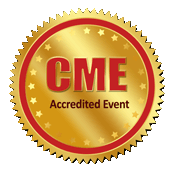Sessions
Track 1: Case Studies of Various Emerging Diseases
An emerging infectious disease (EID) is a contagious disease whose occurrence has boosted in the last 50 years and chances are there that it could increase in the coming future. Emerging infections account for at least 15% of all human pathogens. EIDs are caused by freshly identified strains that may have emerged from a known infection or transferred to a new community or to a field undergoing conserves metamorphosis, or emerging infections. Of thriving concern are adverse synergistic communication between emerging diseases and other infectious and non-infectious conditions ruling to the evolution of unusual syndemics. Many emerging diseases are zoonotic or synoptic - an animal receptacle incubates the organism, with only random conveyance into human populations. Infectious Diseases square amplitude ataxia caused by micro-organism such as viruses, fungi or parasites. Infectious diseases is also, foodborne, vector borne, air borne in related as further more in plants and animals. They essentially affirm on the pathological approach of the microorganism and their therapeutic amplifications, synthesis of division of particularly clinical and diagnostic biology that deals with the cure endurance of the contagious diseases. It exemplifies associate degree progressively mandatory for human pessimism and fatality reason throughout the map.
Track 2: Classification of Emerging Diseases
The type diseases become extremely crucial in the assortment of statistics on reasons behind the illness (morbidity) and causes of death (mortality). It is very important to know the kinds of ailments and disease that are common in an area and how their prevalence rates differ with time to time. Classification of disease has helped to detect an important, frequently causal, relationship.
Track 3: Diagnosis and Prevention
Diagnosis of disease involves determining an infectious pathogen either directly or indirectly. In practice, most are diagnosed by their clinical presentation and are treated without the expertise of that causative agent. Outcome of the cause of the disease are based upon the likelihood that a patient came in contact with a specific agent, the presence of a pathogen in a community, and other epidemiological considerations. When sufficient efforts are given, the infectious agents can be specifically examined.
Track 4: Rare Infectious Diseases
Rare diseases are those medical anomalies, which affect a very least number of the population. They are defined by a wide variety of disorders and syndrome that differs not only from disease to disease but also from person to person suffering from these diseases. About 70% of these disorders are recognized by genetic origins while the others are the result of infections, allergies and environmental outcomes.
Track 5: Infectious Diseases in children
Pediatric infectious diseases are the contagious diseases which are caused in children of different age groups. Pediatric infectious diseases consultant takes care of the infections occurring in children and the curing approaches vary for children from adults. Spreading of diseases can be through direct contact like touching and indirect contact with the infected person. Droplet transmission is very common. Airborne spreading occurs when germs stay in the air and are carried around on air current.
Track 6: Maternal Infectious Diseases
After the birth of the infants, they receive intestinal microflora from their mother’s microbiota. An infant’s indigenous floras differ by mode of delivery and are shaped by environment, genetics, and the mode of feeding. Breast milk affects the infant’s intestinal microflora by contributing maternal skin organisms along with the ones that nurture some microbes and offer defense from others. While breast milk can be a source of maternally derived commensal and pathogenic microbes, there are very few maternal infectious diseases for which the cessation or interruption of breastfeeding is indicated. When a nursing a mother presents the symptoms of an infectious disease and she has already exposed her baby to the pathogen. Cessation of breastfeeding does not prevent exposure, and rather decrease the infant’s protection that comes through specific maternal antibodies and other protective factors found in human milk. Therefore, common maternal bacterial, fungal and viral infections in which the mother’s health is not compromised are not contraindications to breastfeeding.
Track 7: Infectious Diseases in Animals
Infectious diseases of animals are a major hazard to earthly animal health and welfare and their effective control is necessary for agronomic health, for defending and procuring national and international food supplies and for mitigating rural poverty in developing countries. Some catastrophic livestock diseases are regional in many parts of the world and threats from old and new pathogens continue to rise, with changes to worldwide climate, agricultural approaches and anthropology presenting conditions that are especially supportive for the spread of arthropod-borne diseases into new geographical fields. Zoonotic or phonetic infections that are transmissible either directly or indirectly between animals and humans are on the increase and pose serious additional risks to human health and the recent pandemic status of new influenza A (H1N1) is a topical illustration of the challenge presented by zoonotic viruses.
Track 8: Gastrointestinal Infections
Gastrointestinal infections are bacterial, viral or parasitic infections that leads to gastroenteritis, which is an inflammation of the gastrointestinal tract, which involves both the stomach and the small intestine. Symptoms of such anomalies are diarrhea, vomiting, and abdominal pain. Dehydration is the main outcome of gastrointestinal infections, so rehydration is important, but most gastrointestinal infections are self-limited and resolve within a few days. However, in a healthcare setting and in specific populations (newborns/infants, immunocompromized patients or elderly populations), they are potentially serious. Rapid diagnosis, appropriate treatment and infection control steps are eventually important in these contexts.
Track 9: Dermatological Infectious Diseases
Skin infections often begin as minute, red bumps, which slowly increase in size. Some bacterial infections are mild and can easily be treated with antibiotics, but some of them require an oral antibiotic. The symptoms of a skin disorders differ depending on its type. Common symptoms include redness of the skin and a rash. One can also experience common symptoms like itching, pain, and tenderness. Skin infections can spread beyond the skin and seep into the bloodstream. This can be life threatening.
Track 10: Zoonotic Ailments
Zoonotic diseases are often called as Zoonosis. This type of ailments transfers from an animal or insect to a human being. Some of them do not affect the animal but will sicken a human. Zoonotic diseases can range from minor short-term illness to a major life-changing illness. Certain ones can even be lethal.
Track 11: Air borne, Vector Borne and Food Borne Infections
Consumption of contaminated foods or beverages generally leads to foodborne diseases. The initial symptoms may occur within minutes to weeks and regularly occur like flu-like symptoms. Symptoms of infected person are vomiting, nausea, diarrhea or fever as the symptoms are flu-like many people may not recognize that the sickness is caused by bacteria or other contaminant in food. Airborne diseases are caused by pathogens that can be transmitted via air. When an infected person sneezes, coughs or talks, spewing nasal and throat secretions into the air airborne diseases can be usually spread. Tuberculosis (TB) is primarily an airborne disease which is caused by the bacteria Mycobacterium tuberculosis, which is spread person-to-person via air. This bacterium mainly affects the lungs, but may adversely affect other organs.
Track 12: Antimicrobial Agents
An antimicrobial is a substance which kills microorganisms or halts their growth. Antimicrobial medicines can be classified according to the microorganisms they act primarily against them. For instance, antibiotics are used against bacteria on the other hand antifungals are used against fungi. They can also be classified according to their function. Agents that kill microbes are called microbicidal, while the one which only inhibits their growth are termed as biostatic.
Track 13: Pathogenic and Biochemistry of the Pathogens
Pathogenicity refers to the ability of an organism to cause infections. This capability represents a genetic component of the pathogen and the apparent damage done to the host is a property of the host-pathogen interactions. The commensals and opportunistic pathogens lack this inherent ability to cause disease.
Track 14: Current Research and Advancements
Chemicals, drugs or other substances which are used to treat infectious disease can include either antibacterial or antiviral agents. Along with the discovery, development and clinical use of antibacterial drugs, the mortality from infections has been eventually reduced in past few years. However, antibiotic resistant pathogens have accelerated emergence as a consequence of widespread and injudicious use of antimicrobial drugs, which results in a serious threat to public health.
Track 15: Occupational Health and Safety
Occupational health is an integrative field that is concerned with the health, safety and welfare of people who are at work. It mainly focuses on primary prevention of hazards and also deals with all aspects of health and safety in work place. The main motto of this is to keep an eye and promote worker’s health by checking their working capacity and developing a suitable work place where working values is to support health and safety at work.
Track 16: Plant Pathology and Disease Control
This field is also known as plant pathology, which is a scientific study of diseases in plants caused by pathogens or environmental conditions. The organisms that cause infectious disease in plants include oomycetes, fungi, bacteria, viruses, viroids, virus-like organisms, phytoplasmas, protozoa, nematodes and parasitic plants. Not included are ectoparasites like mites, vertebrate, insects or other pests that affect plant health by consumption of plant tissues. It also includes the study of disease cycles, economic impact, plant disease epidemiology, plant disease resistance, pathogen identification, disease etiology, how plant diseases affect humans and animals, pathosystem genetics, and management of plant diseases.
Track 17: Pharmacology and Infectious Diseases
Pharmacology is a recently developed wing of biology which is concerned with the study of drug action and drug can be broadly defined as any man-made, natural, or molecule which exerts a biochemical or physiological effect on the cell, tissue, organ, or organism. More prominently, it is the study of the interactions which occur between a living organism and chemicals that affect normal or abnormal biochemical function. Pharmaceuticals are the one which have medicinal properties.
Track 18: Public Health Practices
The Public Health Practice concentration is organized toward people who are able to enlist in courses that utilize amalgam of on-line, video conference, and in person teaching modalities. Students selecting the public health practice program should hold an academic background in a public health related field and/or experience working or volunteering within at least one public health program. Work includes subject matter in the crux areas of public health: Epidemiology, Biostatistics, Environmental and occupational health, Public health policy and management, Socio-cultural and behavioral aspects of public health.
Market Analysis
This International two day conference will provide practical evidence based strategies to engage your workforce and reduce the spread of acute healthcare associated infections. Emerging Diseases 2023 is to promote the health care perspectives which include plenary speeches, roundtable discussions, symposiums, abstracts, and workshops on Emerging Infectious Diseases and Control risks. The goal is to bring together a multidisciplinary group to identify important issues relating to diseases which is emerging in Russia, Europe, United States, and Asia Pacific, Middle East and other parts of the world. Over 500 scientists, clinicians, nurses, patients, government officials, and representatives from pharmaceutical companies will participate. This summary provides the recommendations from the conference that will be used to develop an action plan against infectious diseases which is lethal to the world. It also comprises of actions proposed by plenary speakers, roundtable faculty and students, conference participants.
Importance and Scope: An emerging infectious diseases meeting puts together various practices which when used appropriately restrict the spread of infection. The awareness is required to prevent the transmission of communicable diseases in all health care settings. The notion of the conference demands a basic understanding of the epidemiology of diseases; the importance of establishing prevention measures and bundles during hospital renovation works to preserve the patient from environment-borne infections. This peer is also imperative for health care administrators to ensure implementation of the infection control program in health care facilities.
It also causes for the significant patient safety issue, and can also be an Occupational Health and Safety issue. A well functioned awareness program helps to minimize the risks for patients. Each health care worker needs to understand their role in public health practice, integrate it into daily activities, and articulate this role to others.
Why Zurich, Switzerland?
Zürich is the largest city in Switzerland and the capital of the canton of Zürich. It is located in north-central Switzerland, at the northwestern tip of Lake Zürich. As of January 2020, the municipality has 434,335 inhabitants, the urban area 1.315 million (2009), and the Zürich metropolitan area 1.83 million (2011). Zürich is a hub for railways, roads, and air traffic. Both Zurich Airport and Zürich's main railway station are the largest and busiest in the country.
Permanently settled for over 2,000 years, Zürich was founded by the Romans, who called it Turicum. However, early settlements have been found dating back more than 6,400 years (although this only indicates human presence in the area and not the presence of a town that early).During the Middle Ages, Zürich gained the independent and privileged status of imperial immediacy and, in 1519, became a primary center of the Protestant Reformation in Europe under the leadership of Huldrych Zwingli.
Members Associated with Emerging Infectious Diseases Research: The mission of the Emerging Diseases 2022 conference in Health Care initiative was to assist in reducing dissemination of infections associated with healthcare, by assisting with the assessment, planning, implementation and evaluation of national infection control policies. The ultimate goal is to endorse quality promotion of health care which is safe for patients, health care workers, others in the health care setting and the environment, in the Infectious Diseases field.
Hospitals Associated with Emerging Infectious Diseases Research: Healthcare-associated infections (HAI) are a threat to patient safety. CDC provides national leadership in surveillance, outbreak investigations, laboratory research, and prevention of healthcare-associated infections. CDC uses knowledge gained through these activities to detect infections and develop new strategies to prevent healthcare-associated infections. Public health action by CDC and other healthcare partners has led to improvements in clinical practice, medical procedures, and the ongoing development of evidence-based infection control guidance and prevention successes.
Major Infectious Diseases Research Associations around the Globe:
British Infection Association
Infectious Disease Society of America
Infectious Diseases Research Network
European Society for Clinical Microbiology and Infectious Diseases
British Society for Antimicrobial Chemotherapy
Society for General Microbiology
British HIV Association
The Hospital Infection Society
Infection Prevention Society
The Royal Society of Tropical Medicine and Hygiene
UK Clinical Virology Network
World Health Organization
Royal Society for Public Health
Health Protection Scotland
The Society of Health care Epidemiology of America
Centers for Disease Control and Prevention
Asia Pacific Society of Infection Control
Infection Control Association
Infection Prevention & Control - American Nurses Association
Infection prevention and Control Canada
The Infection Control Nurses Association
Infection Control - California Hospital Association
Infection Control Association of Zimbabwe
International Federation of Infection Control
Texas Society of Infection Control & Prevention
Philippine Hospital Infection Control Society
Healthcare Infection Society
Infection Control Association of NSW
Major Universities on Infection Prevention Research
Anahuac University North Campus, Mexico
Australian National University, Australia
Benha University, Egypt
Birmingham City University, UK
Center for Clinical Pharmacology, Belgium
Charles Darwin University Casoria Australia
Columbia University Medical Center, United States
Columbia University, USA
Curtin University Bentley, Australia
Dar Al Uloom University, Saudi Arabia
Duke University, USA
Emory University, USA
GMEC, The Global Medical Excellence Cluster
Guangzhou Medical University, China
Guangzhou Medical University, China
Harvard University, United States
Harvard University, USA
Imperial College London, United Kingdom
Infection Control University
Iqbal Chest Centre, Bangladesh
John Hopkins University, USA
Johns Hopkins University, United States
Karolinska University, Sweden
Kindai University, Japan
King Saud Bin Abdulaziz University, Saudi Arabia
King's College London, UK
Kumamoto University, Japan
Linnaeus University, Sweden
Macquarie University, Australia
Mayo Clinic College of Medicine, USA
McGill university Montréal, Canada
McMaster University, Canada
Medi7 Bentleigh, Australia
Murdoch University Murdoch, Australia
National Institutes of Health, USA
Newcastle University, Australia
Northwestern University, Qatar
Osaka University, Japan
Oxford University, UK
Philip Morris International R&D, Switzerland
Pompeu Fabra University, Spain
Queen Mary University, UK
Radboud University Medical Center, Netherlands
Rare Genomics Institute, USA
Research Institute of Hospital del Mar, Spain
Samsung Medical Center, South Korea
St George’s University of London, UK
St. George Hospital, Australia
Stanford University, USA
Tasmanian Health Service, Australia
The Chest & Heart Association of Bangladesh, Bangladesh
The Fourth Hospital of Harbin Medical University, China
The Jikei University School of Medicine, Japan
The University of Newcastle, Australia
Tufts university, United States
United Hospital, Bangladesh
University College London, UK
University of British Columbia, Canada
University of Buffalo, United States
University of California Los Angeles, United States
University of California, USA
University of Cambridge, USA
University of Canberra Bruce, Australia
University of Celiac Disease Center, USA
University of Chicago Medicine, USA
University of Colorado, USA
University of Groningen, Netherlands
University of Lincoln, UK
University of London Imperial College Of Science Technology And Medicine, UK
University of Maastricht, Netherlands
University of Maryland Medical Center, Australia
University of Maryland Medical Center, United States
University Of Melbourne, Australia
University Of Minnesota, United States
University of Newcastle, Australia
University of Pennsylvania, USA
University of Pittsburgh Study
University of Pittsburgh, USA
University of Queensland, Australia
University of Tasmania, Australia
University of Toronto, Canada
University of Valencia, Spain
University of Washington, USA
University of Washington, USA
University of Zurich, Switzerland
University-of-the-sunshine-coast, Australia
Weill Cornell Medical College, Qatar
Wits University, South Africa
Yale University School of Medicine, USA
Yonsei University, South Korea
Major Companies Associated with Infection Prevention Research
Abbott Laboratories, UK
Actavis, USA
Aegerion Pharmaceuticals, Japan
Alexion Pharmaceuticals Inc, Switzerland
Almirall, Spain
Amgen, USA
Amicus Therapeutics, USA
Amphastar Pharmaceuticals, Inc
Araim Pharmaceuticals
Astellas Pharma US
AstraZeneca, Switzerland
AstraZeneca, UK
Baxter International Deerfield
Bayer HealthCare, Germany
Bayer, Germany
Beacon Pharmaceuticals, Bangladesh
Biotie Therapies Corp, Finland
Bioxyne Limited, Australia
Boehringer Ingelheim, Germany
Celgene, Switzerland
Centrapharm Ltd, UK
Chiesi Pharmaceutical, Italy
Cohero Health, USA
Daiichi Sankyo Europe, Germany
Daiichi Sankyo, Japan
Dohmen Life Science
European Medicines Agency
Forest Laboratories, USA
Gecko Health, USA
Generics (UK) Ltd, UK
Genus Oncology Vernon Hills, USA
Genzyme, USA
Gilead sciences, USA
GlaxoSmithKline, UK
Global Data, UK
Gsk, London
Hormosan Pharma, Germany
Ikris Pharma Network Pvt Ltd, India
Kissei Pharmaceutical Co., Ltd, Japan
Kyowa Hakko Kirin Co. Ltd, Japan
Lallemand Pharma, Switzerland
Marathon Pharmaceuticals
Merck & Co, USA
Millennium Pharmaceuticals
Napp Pharmaceuticals Ltd, UK
Novartis, Switzerland
NPS Pharmaceuticals
Octapharma, USA
Onyx Pharmaceuticals, USA
Otsuka Holdings Co., Ltd, Japan
Panmira Pharmaceuticals, LLC, USA
Pearl Therapeutics, Inc
Pfizer, USA
PharmaMar, USA
Prosensa, Netherlands
PT Boehringer Ingelheim, Indonesia
Queensland Respiratory Laboratory Pty. Ltd, Australia
Ranbaxy Laboratories Limited
Raptor Therapeutics
Roche, Switzerland
Sanofi, France
Sarepta Therapeutics, USA
Sigma-Tau Pharmaceuticals, Italy
Sunovion Pharmaceuticals, USA
Swedish Orphan Biovitrum AB, Sweden
Takeda, Japan
TriStem Corp Ltd, UK
Vertex Pharmaceuticals, USA
ViroPharma
ViroPharma, USA
Visionary Pharmaceuticals, Inc, USA
Yungjin Pharm Ind. Co., Ltd, South Korea
Market Research on Emerging Diseases: The global infectious disease market size was valued at USD 46.88 billion in 2019 and is projected to grow at a CAGR of 6.6% during the forecast period. Rising prevalence of infectious ailments, increasing expenditure to boost the penetration rate of treatments of these diseases, rising initiatives for creating awareness about treatments & diagnosis of these conditions, and increasing clinical trial studies for development of new drugs are likely to be the factors responsible for growth of this market. In 2018, the HIV segment held the largest share i.e., 45.9% of the market. Increasing prevalence of HIV, rising funding activities for patients suffering from HIV, increasing supply of free HIV self-test kits in African countries, and rising awareness campaigns are the key factors responsible for the largest share held by this segment. In addition, WHO aims to test 90% and treat 80% of the people suffering from HBV and HCV by 2025, through its Global Health Sector Strategy on viral hepatitis, which is further expected to contribute to the growth of this segment.
For more details please visit: https://emerging-diseases.infectiousconferences.com/











